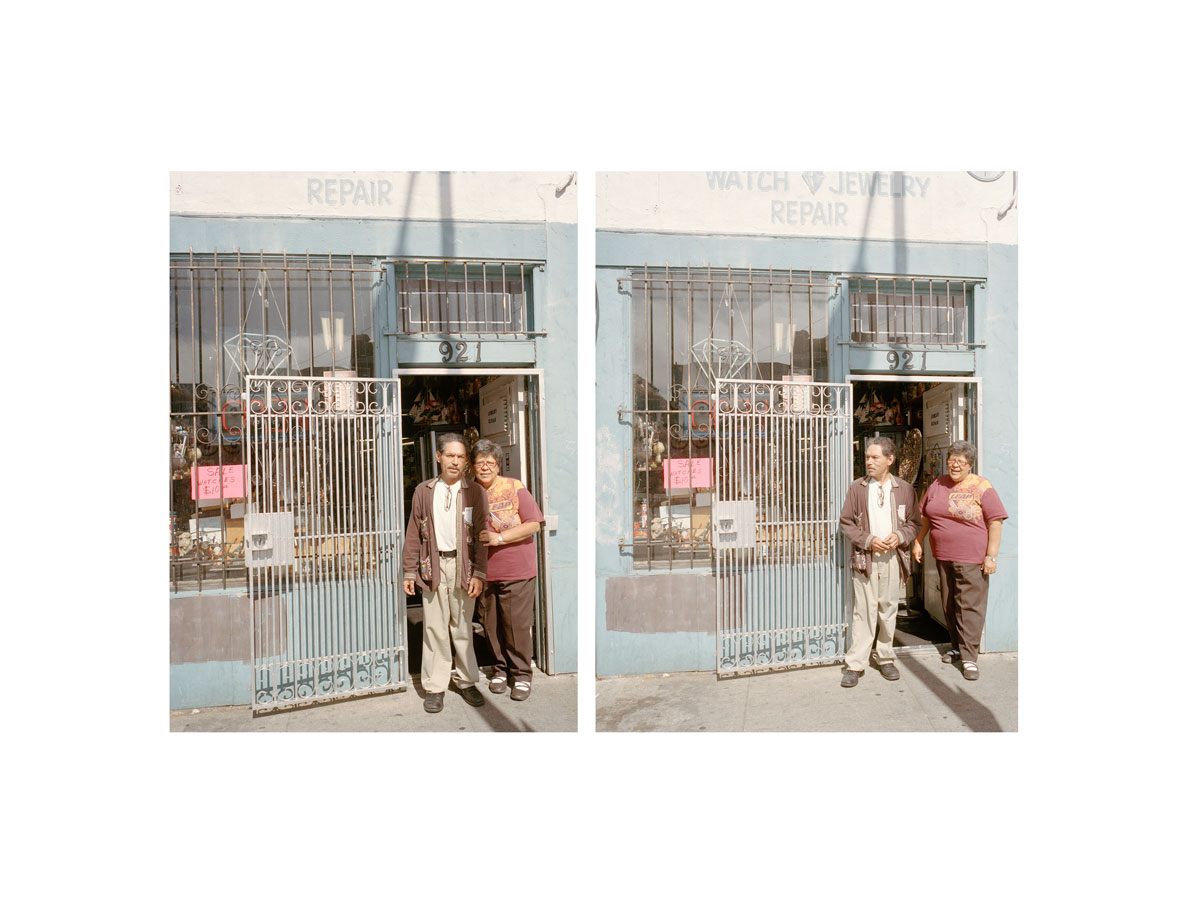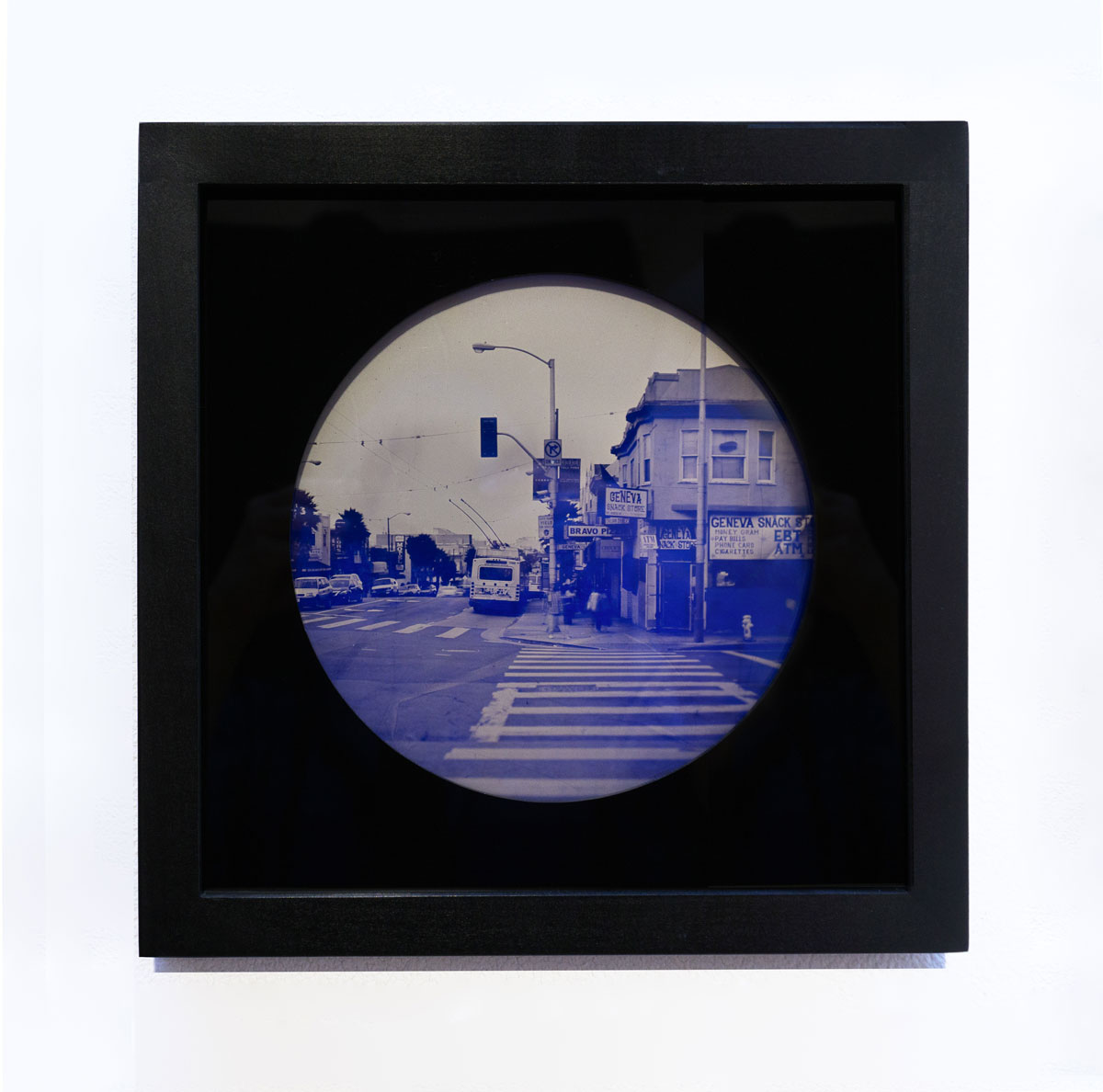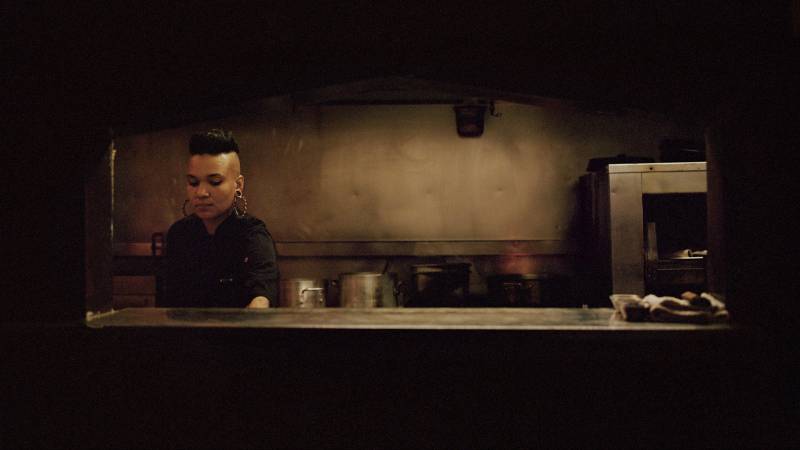It’s a 20-minute bus ride south from the hubbub of 16th and Mission to San Francisco’s Excelsior neighborhood. Far from the city’s bustling downtown, the sky opens wide over low-slung buildings and homes in one of San Francisco’s last neighborhoods to be touched by gentrification. It’s here, at the corner of Geneva Avenue and Mission Street, that photographer Kari Orvik maintains her tintype studio.
From this prime vantage point, Orvik witnesses the pulsing activity of her intersection and the surrounding neighborhood, scenes captured in wet plate collodion images on metal, glass and acrylic; color and digital prints; and landscapes. Geneva, now on view at SF Camerawork, offers a poetic interpretation of place against a backdrop of sweeping urban change.
As a visual document, Geneva calls up Janet Delaney’s South of Market series, shot between 1978 and 1986. Both projects convey a sense of San Francisco in flux, but Orvik’s take is more nuanced. Delaney’s project registers SoMa’s transformation from small businesses and low-to-middle-income housing to the city’s cultural hub. Meanwhile, the images comprising Geneva capture quotidian moments and encounters, conveying Orvik’s evident affection for the neighbors who inhabit her landscape day-to-day. Through these images, we are encouraged to temporarily suspend thoughts of gentrification and how it is changing San Francisco, and appreciate who and what it is in the moment.

The “who” and “what” Orvik captures form a rich visual tapestry. They are Tony, the watch-and-jewelry repairman, who stands with his wife Maria in front of their shop. The four-part tintype Keep #2 (Tony’s pins) (2015), which hangs opposite a diptych portrait of Tony and Maria, evokes the mechanical details and intimacy of his work.
The who of Geneva is also Kristian, young and humming with potential energy, the only one who pays attention to Orvik’s camera amidst a crowd of people gathered at a nearby bus stop. It is Dominic, who assisted the artist in her studio before pursuing photography at City College. And it is Millie, who we see in a tintype portrait filtered through cool blue acrylic, and in a pigment print that captures her at work behind the counter at the Dark Horse Inn.
The latter has a composition so beautifully moody it evokes Nighthawks, Edward Hopper’s 1942 masterpiece. The two portraits of Millie demonstrate Orvik’s commitment to her subjects; her keen understanding of these individuals determines which photographic process (among the many at her disposal) will best portray a scene or a sitter at a given moment.

The moments captured in Geneva span the last five years. The show, a retrospective of sorts, visualizes Orvik’s interests beyond the tintype process, many of which she explored during her 2018 residency at Recology: how photographs are made, and how memory is affected through that making. Many of the images in Geneva appear unrelated at first glance: visual cues such as uniform framing and images hung in single rows are abandoned in favor of a less rigidly structured presentation. Hung above and below the standard 60-inch mark, the images evoke a satisfying stream-of-consciousness approach.
When I spoke with Orvik, she identified community participation as a fundamental aspect of this work. Too often, she rightly notes, the people immediately affected by gentrification are spoken about rather than spoken to, their own experiences sidelined by the presumptions of others. Orvik’s focus on Excelsior residents visually foregrounds experiences other than her own, capturing a resilience that momentarily arrests thoughts of what may be lost if long-time residents are pushed out.

‘Kari Orvik: Geneva’ is on view at SF Camerawork through Dec. 20. Details here.


